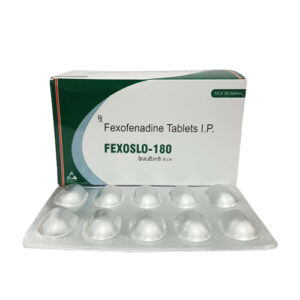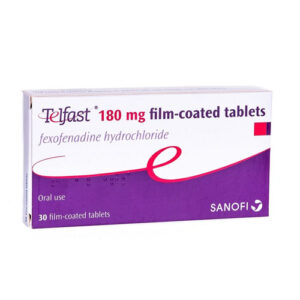No products in the basket.
Hayfever
Hay fever, also known as allergic rhinitis, is a common allergic reaction that occurs when your immune system overreacts to allergens in the air, such as pollen, dust mites, or pet dander. It typically affects the nose, eyes, throat, and sinuses, causing symptoms like sneezing, itching, a runny nose, and watery eyes.

Hayfever
Hay fever can be seasonal, triggered by specific pollens in the spring, summer, or autumn, or it can be perennial, affecting individuals year-round due to indoor allergens. Although not life-threatening, hay fever can significantly impact your quality of life, especially during peak allergy seasons.
Causes of Hay Fever
Hay fever is caused by an allergic reaction to airborne substances that the immune system mistakenly identifies as harmful. Common triggers include:
Pollen:
- Tree Pollen: Common in the spring, trees like birch, oak, and hazel release pollen that can trigger hay fever.
- Grass Pollen: A leading cause of hay fever in late spring and early summer.
- Weed Pollen: Weeds like ragweed are a common trigger in late summer and autumn.
Dust Mites:
- Tiny creatures that live in household dust and thrive in warm, humid environments, dust mites can cause year-round hay fever symptoms.
Pet Dander:
- Proteins found in the skin flakes, saliva, and urine of furry pets can trigger allergic reactions.
Mould Spores:
- Mould can grow indoors and outdoors in damp areas, and its spores can be inhaled, causing hay fever symptoms.
Airborne Irritants:
- Smoke, pollution, strong odours, and chemicals can irritate the nasal passages and exacerbate hay fever symptoms.
Things You Can Do to Help with Hay Fever
Managing hay fever involves reducing exposure to allergens and relieving symptoms:
Avoid Triggers:
- Monitor Pollen Counts: Check daily pollen forecasts and limit outdoor activities when counts are high.
- Keep Windows Closed: During peak pollen seasons, keep windows and doors shut to prevent allergens from entering your home.
- Shower and Change Clothes: After spending time outdoors, shower and change your clothes to remove pollen from your skin and hair.
Use Medications:
- Antihistamines: Over-the-counter or prescription antihistamines can help relieve sneezing, itching, and a runny nose.
- Nasal Sprays: Steroid nasal sprays can reduce inflammation and relieve nasal congestion.
- Decongestants: These can help clear a blocked nose but should not be used for extended periods.
- Eye Drops: To relieve itchy, watery eyes, use antihistamine or lubricating eye drops.
Home Remedies:
- Saline Nasal Rinse: A saline rinse can help clear allergens from your nasal passages.
- Honey: Some believe that consuming local honey can gradually desensitise your body to local pollen.
Improve Indoor Air Quality:
- Use Air Purifiers: HEPA filters can help remove allergens from the air.
- Keep Your Home Clean: Regularly vacuum with a HEPA filter and dust surfaces to reduce indoor allergens.
- Control Humidity: Use a dehumidifier to keep indoor humidity levels low, reducing mould and dust mites.
How Do You Know If You Have Hay Fever?
The symptoms of hay fever can be similar to those of a common cold, but there are key differences:
Common Symptoms of Hay Fever:
- Sneezing: Frequent sneezing, especially in bouts.
- Runny or Stuffy Nose: Clear, watery nasal discharge or nasal congestion.
- Itchy Eyes, Nose, or Throat: A hallmark symptom of hay fever.
- Watery Eyes: Eyes that water and become red or swollen.
- Fatigue: Persistent symptoms can lead to tiredness and difficulty sleeping.
Differences from a Cold:
- Duration: Colds typically last for a week or two, while hay fever can last for weeks or even months, depending on your exposure to allergens.
- Fever: Unlike a cold, hay fever doesn’t cause a fever.
- Seasonality: If symptoms occur at the same time every year, it’s more likely to be hay fever.
How to Build Immunity to Hay Fever?
Building immunity to hay fever is possible through a process known as immunotherapy:
Allergy Shots (Subcutaneous Immunotherapy):
What is it?: A series of injections that gradually expose your immune system to increasing amounts of the allergen, helping it become less reactive over time.
Is it effective?: Allergy shots can reduce symptoms significantly and provide long-term relief, even after treatment ends.
Sublingual Immunotherapy (SLIT):
What is it? Allergen tablets or drops placed under the tongue daily, offering a needle-free alternative to allergy shots.
Is it effective? SLIT is effective for certain types of pollen allergies and can be taken at home under the guidance of a healthcare provider.
Gradual Exposure:
Some people try to build tolerance by gradually increasing exposure to allergens in controlled environments, though this should be done with caution and under medical supervision.
Does Hay Fever Mean You Have a Weak Immune System?
Hay fever doesn’t necessarily mean you have a weak immune system. In fact, it’s the result of an overactive immune response. When exposed to allergens like pollen or dust, the immune system mistakenly identifies these harmless substances as threats and releases histamines, leading to the symptoms of hay fever. While this response is bothersome, it’s not an indication of a weakened immune system but rather an exaggerated defence mechanism.
How to Prevent Hay Fever?
While hay fever cannot be completely prevented, you can take steps to minimise your exposure and reduce symptoms:
Stay Informed:
- Monitor Pollen Forecasts: Be aware of pollen levels, especially during peak seasons, and plan your activities accordingly.
Create a Pollen-Free Home:
- Close Windows and Doors: Keep allergens out by closing windows during high pollen times.
- Use HEPA Filters: Install air purifiers with HEPA filters in your home and change filters regularly.
Reduce Outdoor Exposure:
- Limit Outdoor Activities: Especially during early morning or late afternoon when pollen counts are highest.
- Wear Sunglasses and a Hat: Protect your eyes and hair from pollen exposure.
Maintain Good Hygiene:
- Shower After Being Outdoors: This helps remove pollen from your skin and hair.
- Change and Wash Clothes: After spending time outside, change your clothes to avoid bringing pollen indoors.
Consider Immunotherapy:
- Allergy Shots or SLIT: These treatments can help prevent severe reactions by building your body’s tolerance to allergens over time.
By taking proactive measures and managing symptoms effectively, you can reduce the impact of hay fever on your daily life.


